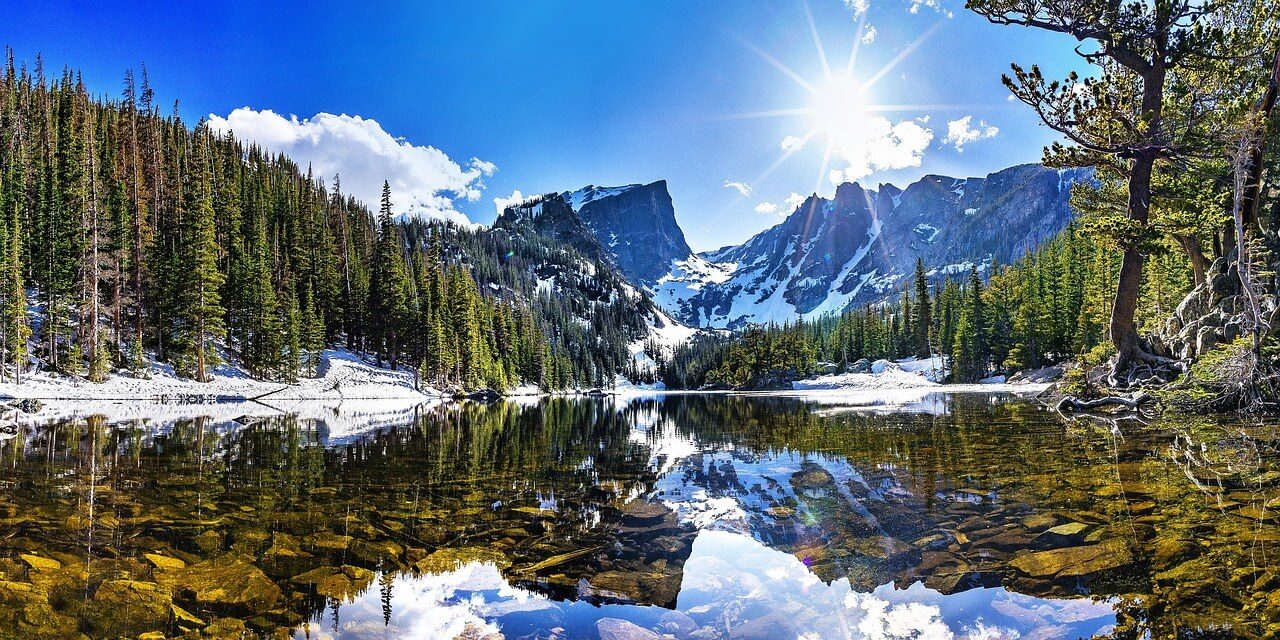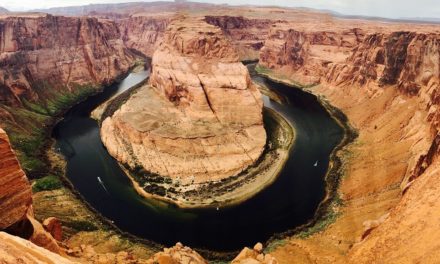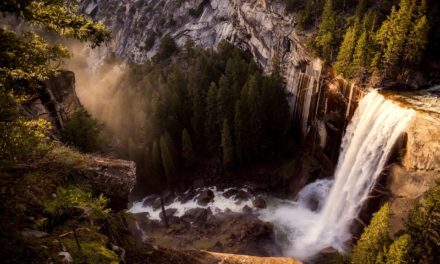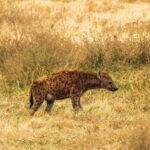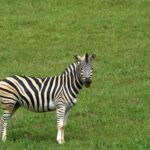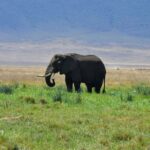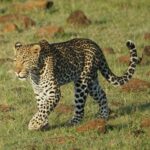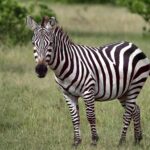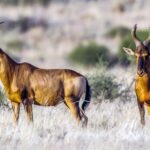Table of Contents
Overview / About
Located in north-central Colorado, Rocky Mountain National Park is a breathtaking wilderness of towering peaks, alpine lakes, and rugged tundra. Established in 1915, it spans over 415 square miles (265,000 acres) across the Continental Divide where rivers flow east toward the Atlantic and west toward the Pacific.
The park’s centerpiece is Longs Peak, a 14,259-foot giant visible for miles, surrounded by a dramatic skyline of snow-capped summits and sweeping valleys. Visitors come for the crisp mountain air, shimmering lakes like Bear Lake and Dream Lake, and endless hiking trails that reveal the untamed spirit of the Rockies.
Recognized as a UNESCO World Biosphere Reserve, Rocky Mountain National Park is both a natural wonder and a living classroom on alpine ecology.
Wildlife & Nature
The park’s diverse elevation ranging from 7,500 to over 14,000 feet creates a mosaic of ecosystems.
Wildlife:
- Iconic mammals include elk, mule deer, moose, bighorn sheep, black bears, pikas, and yellow-bellied marmots.
- Birdlife is abundant, with Steller’s jays, Clark’s nutcrackers, peregrine falcons, and even golden eagles soaring above.
- Beavers, foxes, and river otters can often be seen near lakes and creeks.
Vegetation:
- Lower elevations feature ponderosa pine and Douglas fir forests.
- Mid-elevation areas are dense with spruce and fir, while alpine tundra above the treeline blooms with hardy wildflowers like alpine forget-me-nots and Indian paintbrush.
- Over 1,000 plant species thrive here, many adapted to extreme weather and thin air.
Ecosystems: From glacial-carved valleys to subalpine meadows, every landscape showcases nature’s resilience in one of North America’s most dramatic mountain environments.
Experiences & Activities
Rocky Mountain National Park offers countless ways to explore its peaks and valleys from scenic drives to summit hikes.
Top Experiences:
- Trail Ridge Road: America’s highest continuous paved road (12,183 ft) a must-drive for sweeping alpine views and wildlife spotting.
- Hiking:
- Bear Lake Trailhead: Easy access to Dream Lake, Emerald Lake, and Nymph Lake.
- Alberta Falls Trail: A short, rewarding hike to a cascading waterfall.
- Sky Pond or Longs Peak Trail: For experienced hikers seeking challenge and elevation.
- Wildlife Watching: Dawn and dusk are best for elk and moose sightings, especially in Moraine Park.
- Camping & Stargazing: The high-altitude sky reveals a brilliant Milky Way.
- Winter Activities: Snowshoeing, cross-country skiing, and quiet winter hikes offer a peaceful escape.
Ranger Programs:Join guided nature walks, wildlife talks, and astronomy nights all led by passionate park rangers.
Best Time to Visit
- Summer (June–September): Warm weather, open roads, and full access to trails. This is the peak season for visitors.
- Fall (September–October): Fewer crowds, golden aspens, and spectacular elk rutting season.
- Winter (November–April): Snow-covered landscapes ideal for snowshoeing, though many roads close.
- Spring (May): Melting snow creates roaring waterfalls and blooming wildflowers at lower elevations.
- Best Months: June to September for hiking and photography.
How to Reach & Park Entry
Location: Near Estes Park (east) and Grand Lake (west), Colorado.
By Air:
- Denver International Airport (DIA): About 75 miles (2 hours) from Estes Park.
By Road:
- From Denver to Estes Park: via US Highway 36.
- From Grand Junction or Steamboat Springs: access via US Highway 34.
- Trail Ridge Road connects the east and west entrances (open only from late May to mid-October, weather permitting).
Entry Fees:
- $35 per vehicle (valid for 7 days).
- Timed entry permits required during peak months (May–October).
Where to Stay / Camping Options
Inside the Park:
- Moraine Park Campground: Popular and scenic, open year-round.
- Glacier Basin Campground: Near Bear Lake Road, ideal for families.
- Aspenglen & Timber Creek Campgrounds: Smaller and quieter, available seasonally.
Nearby Lodging:
- Estes Park: Range of cabins, lodges, and resorts with mountain views.
- Grand Lake: Quaint lakeside town with cozy inns and rentals.
Book early campgrounds and lodges fill up quickly in summer.
Travel Tips / Safety Notes
- Altitude: Many trails exceed 10,000 feet drink plenty of water and pace yourself.
- Weather: Mountain conditions can shift suddenly. Always carry layers, even in summer.
- Wildlife Safety: Keep at least 25 yards from elk and 100 yards from bears or moose. Never feed animals.
- Trail Ridge Road: Drive carefully steep drops, wind, and thin air can challenge even experienced drivers.
- Leave No Trace: Pack out all trash, and stay on marked trails to protect fragile alpine plants.
- Cell Service: Limited or unavailable in many parts of the park.
Packing List
- Layered clothing (temperatures vary greatly)
- Sturdy hiking boots
- Rain jacket and windbreaker
- Sunscreen and sunglasses
- Hat and gloves (even in summer)
- Reusable water bottle and hydration pack
- Binoculars and camera
- Map or offline GPS
- Trekking poles for steep trails
- Snacks or energy bars
Visitor Statistics
Rocky Mountain National Park welcomes around 4.5 million visitors annually, ranking among the top five most-visited U.S. national parks. Peak visitation occurs in July and August, while winter offers solitude and crisp alpine beauty.
Conservation & Responsible Tourism
Rocky Mountain National Park protects an essential alpine ecosystem that faces challenges from climate change, wildfire risk, and visitor impact. The National Park Service focuses on restoring native habitats, maintaining wildlife corridors, and reducing carbon emissions from park operations.
You can help preserve this mountain sanctuary by:
- Using refillable bottles and reducing plastic waste.
- Respecting wildlife and keeping noise to a minimum.
- Supporting local eco-friendly lodges and outfitters.
- Staying on designated trails to protect fragile tundra.
Rocky Mountain National Park is more than a place to visit it’s a reminder of nature’s power, balance, and peace high above the clouds.

